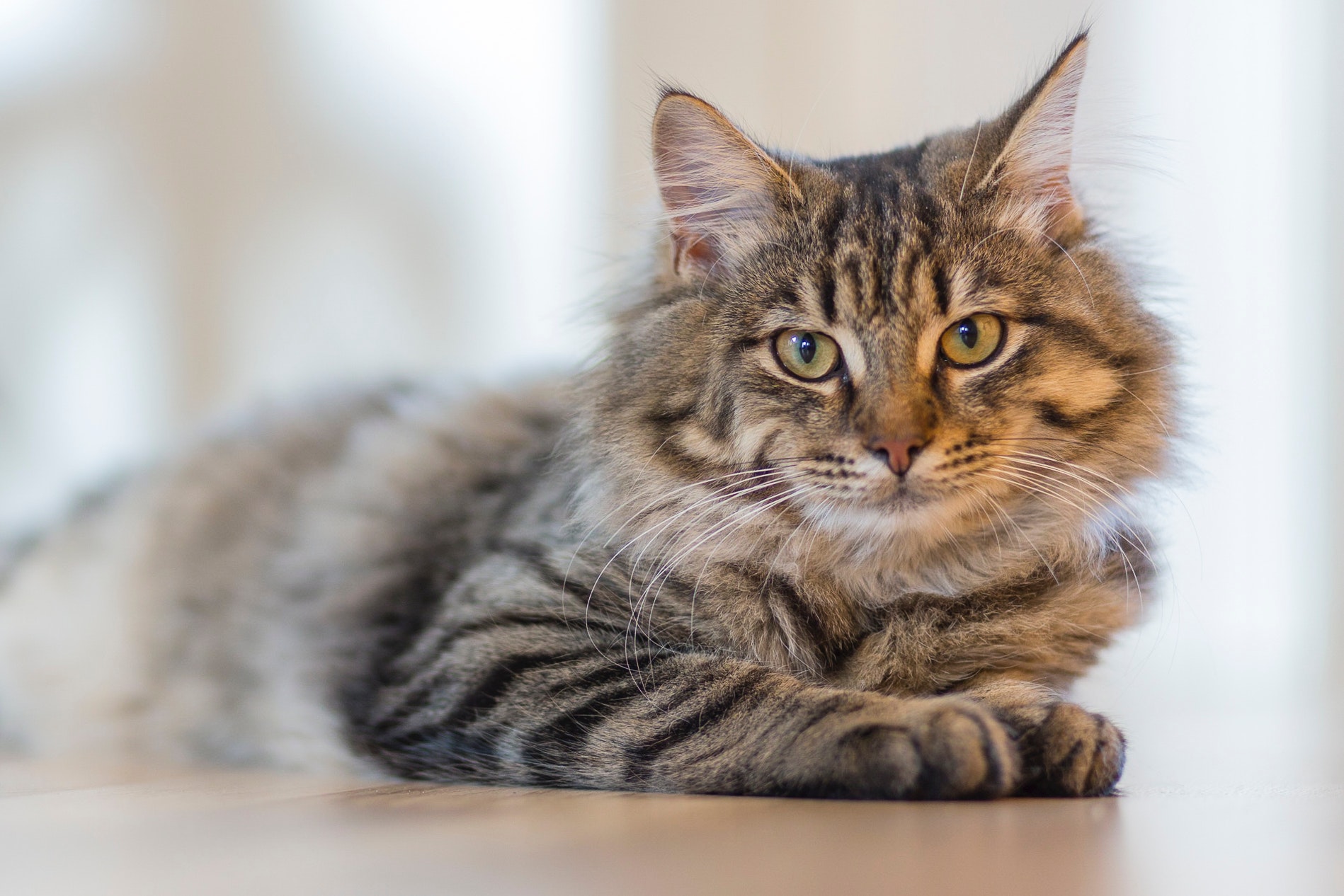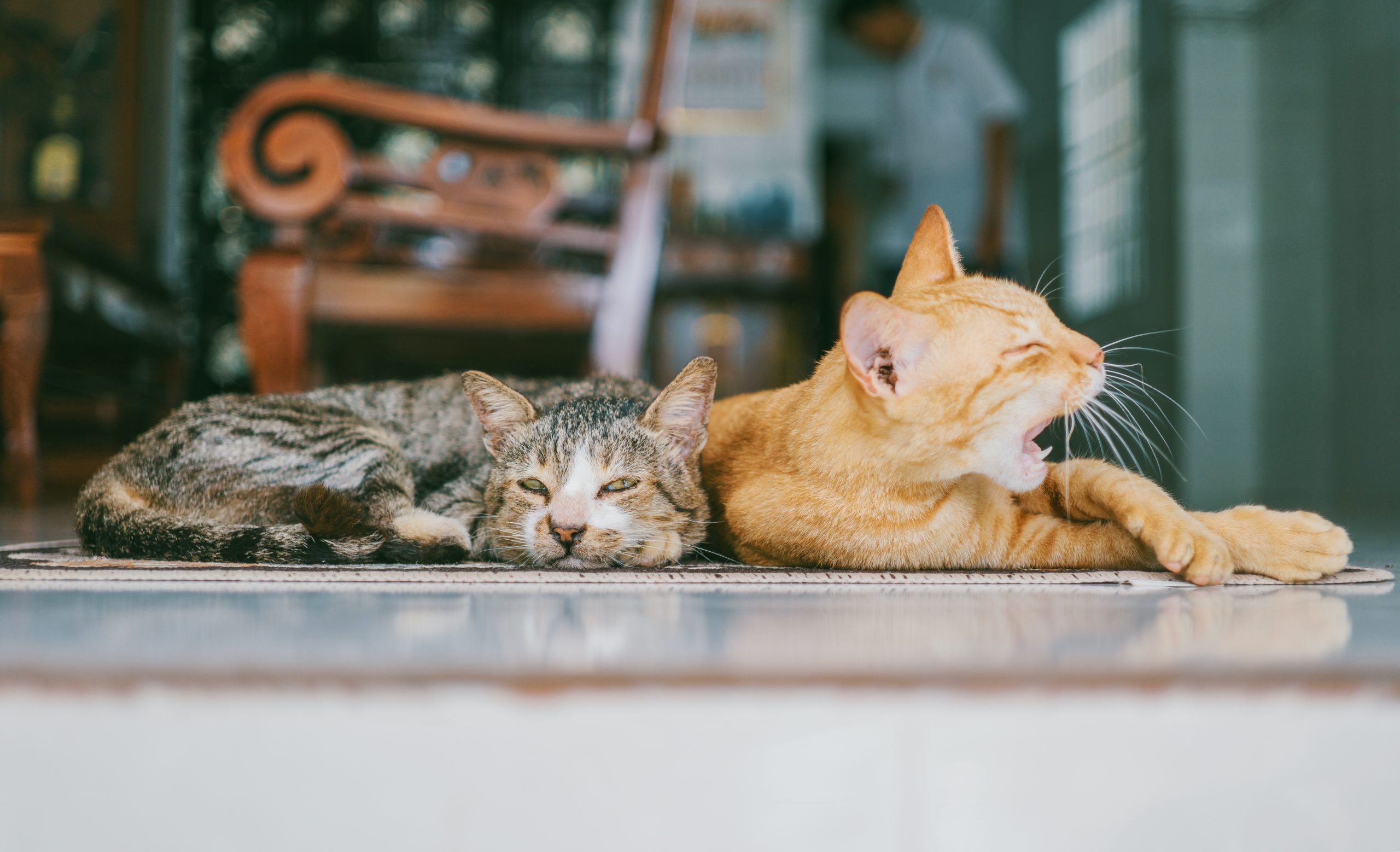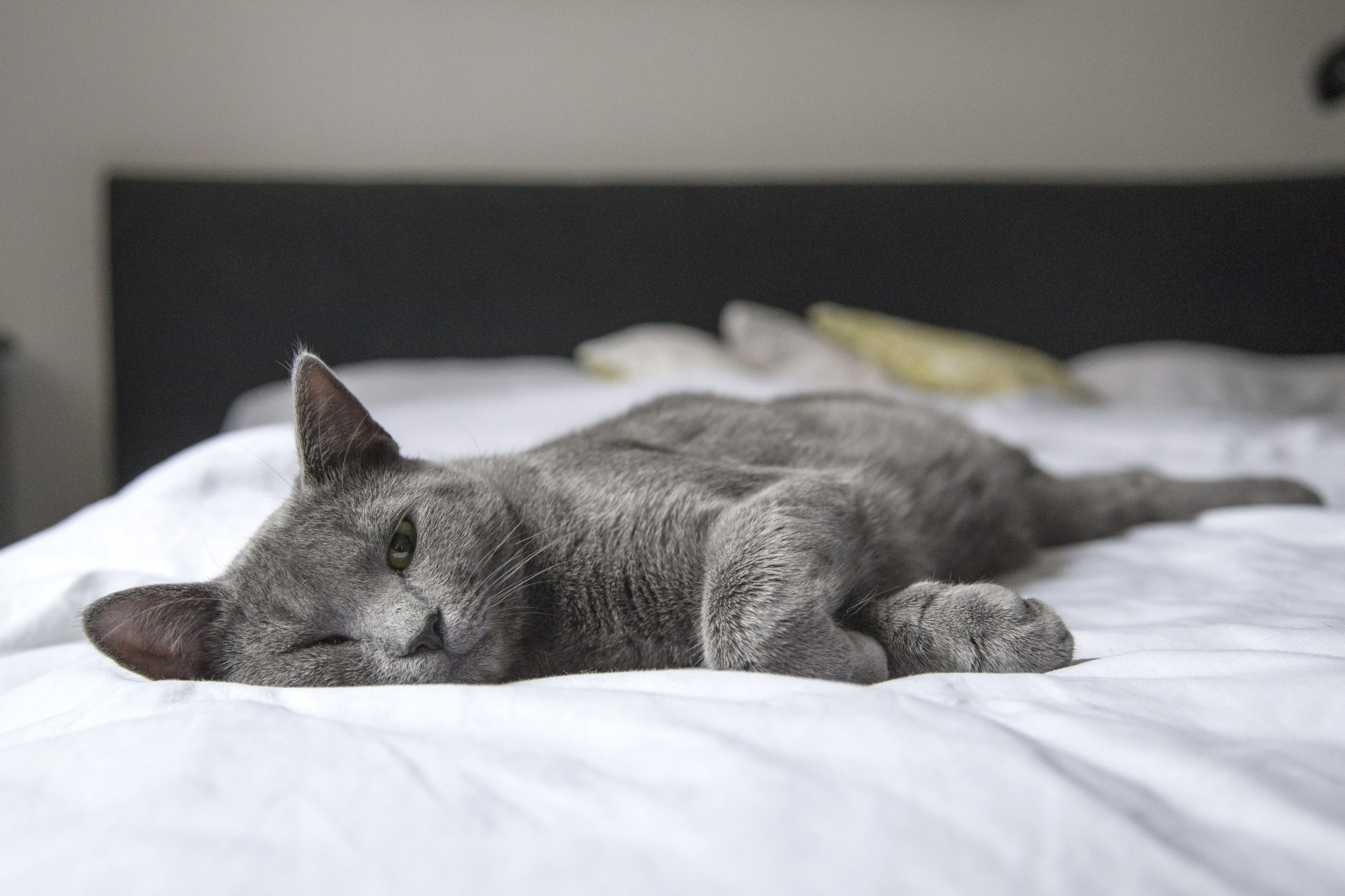There is always a big concern over the sharing of diseases between the family pets and their humans. That is actually why the big concern arose over Bird Flu.
However, although the list of POSSIBLE diseases that a cat can share with its owner (referred to as Zoonoses) is quite long, the actual number of diseases that can infect a human on a regular basis is small.
Ironically, it works both ways. We can give cats some diseases too.
None of the viruses that cats get – except Rabies (which we do not have in Australia) – can infect humans, so that lets us off the hook for most of the infections that a cat may get in its lifetime!
These feline viruses include Feline AIDS, Feline Leukaemia, Feline Herpes, Rotavirus, Coronavirus and Parvovirus. And several more.
What diseases can be transmitted?
Toxoplasma
The most common Zoonosis to cause concern, especially for pregnant women, is Toxoplasma.
The details are complex, but the reality is Toxoplasma is a small parasite that lives in the muscle of many mammals – sheep, rabbits, rats and kangaroos – and even birds (chickens). If young cats eat these meats, the parasite they carry multiplies in the intestines.
It is spread to the herbivores out on the fields and pastures contaminated by feral cats’ faeces. Usually only YOUNG cats pass contaminated faeces, so once past the kitten stage, very few cats will pass on the eggs (called Oocysts), which can infect other mammals, including humans.
The upshot of this is that most people in Australia become infected with Toxoplasma Oocysts by gardening without gloves, and in France, by eating undercooked lamb or rabbit. Drinking unchlorinated water, especially from areas where feral cats live, is another potential source of infection.
Being infected with the Oocysts is only a problem for pregnant women if they have not been in contact with the Toxoplasma Oocysts before they got pregnant. This is because, if they come into first contact after they get pregnant, then the baby gets infected as well, with debilitating effects.
So, because cat faeces are a factor it is only right that pregnant women should not handle cat faeces. However, bear in mind it takes a few days for the Oocysts to develop enough in the faeces for them to become infective, so daily cleaning of litter trays also removes that risk.
Toxoplasma Oocysts do not hang around on the cat’s coat either. In fact their skin has 30% fewer bacteria on it than yours because of all that grooming! So, the risk to an owner of an adult cat with a regularly cleaned litter tray is low.
Interestingly, vets and vet nurses have no higher levels of exposure to, nor infection by, Toxoplasma than the general population, which would indicate that cats are actually a low-risk source of infection when proper hygiene is followed.
Precautions
Women, especially pregnant women should use gloves when gardening, always washing hands after handling any soil or sand. Cook lamb, rabbit and kangaroo meat well, and, again, wash hands after handling those meats raw. If you are going to trundle about the countryside drinking ‘wild water’, there are quite a few other problems you will pick up that way, so boil or chlorinate ‘fresh water’. Pretty simple really.
Blood testing your cat for Toxoplasma is not going to be very revealing, as most cats will have been exposed and will be immune from quite a young age. The ideal is to test to ensure that both expectant mother and cat both have high levels of toxoplasma antibodies prior to the pregnancy! That way, no one is going to be infected!
Ringworm
Ringworm is also a very common infection. It is not a worm but a fungus, which grows in a ring formation like mushrooms! It is usually the fungus called Microsporum canis and it lives in the soil as well as on skin. It is as easy for children to get ringworm from another child (at preschool etc.), as it is to get it from a kitten.
Ringworm usually only infects the young, the pregnant and the elderly or those whose immune system is not working very well. It is easy to treat with creams (on humans) and shampoos and tablets in kitten. Again, adult cats rarely carry the fungus unless their immune system is compromised.
Giardia and Cryptosporidia
Giardia and Cryptosporidia, both of which cause diarrhoea, are often water-borne, and you can get them from the same source as your cat might. You can transmit them to your cat, too. However, once again, litter tray hygiene is usually sufficient to limit the problem.
Salmonella
Similarly, Salmonella comes from meat, especially ‘mass cooled’ chicken which is dragged through a water bath. The bacteria is a normal resident in our noses, as well as cats’ (and many other animals’) intestines. The symptoms of vomiting and diarrhoea are the same for cats and humans but then can also be transmitted if hygienic methods are not practised. Once again, the major source of this type of food poisoning is either undercooking, or cross contamination between fresh and cooked meat.
Cat bites & scratches
So really, the biggest problem you can get from your cat is a cat bite, and these are not to be ignored. While the frequency of cat bites is much less than dog bites (cats give lots of warning and will try to get away rather than bite), they are very infective and not to be taken lightly. Some people are very susceptible to blood poisoning from just one bite.
The bacteria in a cat’s mouth are actually not as toxic to people as the bacteria in other peoples’ mouths or monkeys’ mouths, but because the cat tooth injects the bugs under the skin, the bacteria have an ideal place to grow. Cat scratches can transmit bacteria called Bartonella which causes lymph nodes to swell painfully once the system is infected. It usually only inhabits young cats, and most people get over it without being treated specifically for it.
So, in a nutshell:
- There are lots of possible diseases, but few common infections shared by cats and humans.
- Most of the diseases are transmitted by young cats, in the same way as young children harbour most of the viruses and infections in the human population.
- Even once infected, most people can be cured of most of what a cat can give them, unlike some of the viruses we share between ourselves such as HIV, Herpes and Hepatitis.
- Regular cleaning of trays and handwashing will significantly minimise the risk of disease transmission.
So think of it as your cat giving much more affection than infection!
About the Author

Dr. Kim Kendall, BVSc MANZCVS (Cat Medicine and Animal Behaviour) is one of the best known feline vets and behaviourists in Australia and the world.
Since 1994 her dedicated cat-only veterinary, boarding and grooming centre, The Chatswood Cat Palace has been based on Sydney’s North Shore.
Dr. Kim has a passion for improving feline health, and wants the best emotional and physical wellbeing for all cats at home. She achieves this by incorporating real science to back up clinical judgement.
She is also a pioneering expert in the field of Feline Friendly Care at home and at the vet clinic and has written extensively on the subject.




